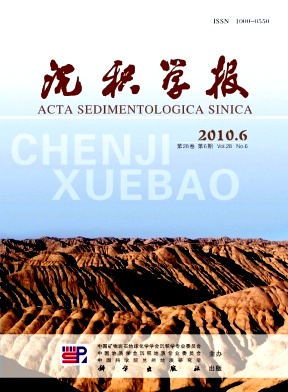Response on Sediment of Evaporate in Kuqa Basin from Paleogene to Neogene Period and Himalayan Tectonic Phase
- Received Date: 1900-01-01
- Rev Recd Date: 1900-01-01
- Publish Date: 2010-12-10
-
Key words:
- Kuqa Basin
Abstract: Sediment of evaporite with gigantic thickness had been developed in Kuqa Basin from Paleogene to Neogene period, and the main stratum were composed of Kumugeliemu group, Suweiyi group(Paleogene), and Jidike group(Neogene). Going with transformation of the water of saline lake changing from fresh water, saline water, to brine, and then to saline water, fresh water, accordingly, the sediment changes from clastic rock, gypsum, to saline rock, and then to gypsum, clastic rock, so the sediment of evaporate and clastic rock is alternated each other, and the sediment rhythm or gyration come into being. Based on some datum of drill holes, 5 sedimentary cycles of evaporite are given. Ⅰ1 andⅠ2 sediment cycles have been developed in Kumugeliemu period. Ⅰ1 sediment cycle, which mainly developed in early Kumugeliemu period, has been fulled of folium saline rock, gypsum, limestone or dolomite, clastic rock, not only is the sediment scope mainly attached center to Tubei1, Dabei2 and Xiqiu2 drilling holes, but also attached borderline to Kela2 drilling hole in north of basin and Yangta 2 drilling hole in the south of basin, and extended from northwest to southeast. Ⅰ2 sediment cycles have been developed in late Kumugeliemu period, has been fulled of gigantic and thick saline rock and gypsum, and the sediment scope han been extended based on early sediment scope. Ⅰ3 sediment cycles has been mainly developed in Suweiyi period, and influenced on the early Himalayan tectonic movement, the floor in northwest of basin was uplifted, so the sediment area was split into two parts which moved not only from north to south but also from west to east. The main sediment is clastic rock and gypsum contained clastic rock, and the evaporite sediment moved from north, middle, to south of Kuqa basin in the west, in the east of basin it moved from west to east. The gigantic thickness sediment of evaporite in Kumugeliemu period (Ⅰ1、Ⅰ2 sediment cycles) reflects comparatively quiet tectonic setting after Yanshan movement; and the sediment of evaporate has been changed obviously on lithology and scope in (Ⅰ3 sediment cycles) in Suweiyi period, so unsteadily tectonic setting has been reflected in early Himalayan tectonic phase. Sediment of evaporite with gigantic thickness (Ⅰ4 sediment cycles) had been mainly developed in east of basin in Jidike period, and a few in south of basin, comparing sediment of evaporate in west of basin in Kumugeliemu period, the thickness of saline rock is attenuation but the gypsum is opposite, which reflects the long time of salty lake and the short time of saline lake. The movement from west to east of the sediment area reflects the early Himalayan tectonic movement was still continuing In spite of its decline. The sediment of evaporate (Ⅰ5 sediment cycles) has been breaken down in Jidike period, and it han been changed into continental sedimentation, so the setting of the mountain uplifted, denuded, cumulated fleetly, was indicated by piedmont deposits, and the middle Himalayan tectonic movement period were coming. So it is a good corresponding relation on sediment of evaporite in Kuqa Basin and Himalayan tectonic movement, and it is a reflection of geology event made by largescale tectonic movement in small areas.
| Citation: | CAO Yangtong. Response on Sediment of Evaporate in Kuqa Basin from Paleogene to Neogene Period and Himalayan Tectonic Phase[J]. Acta Sedimentologica Sinica, 2010, 28(6): 1054-1065. |






 DownLoad:
DownLoad: